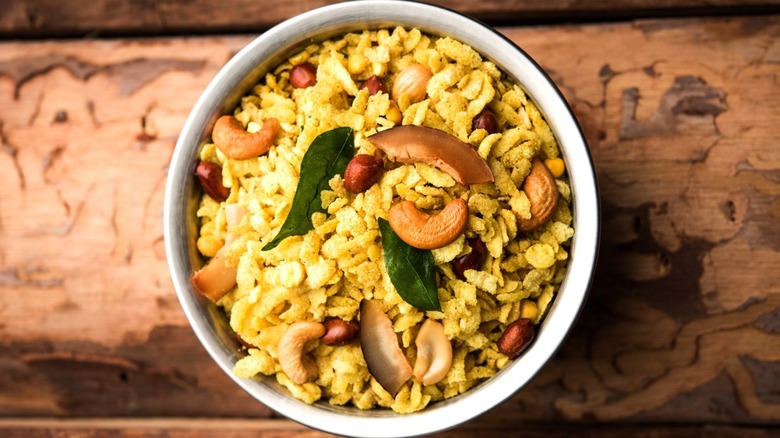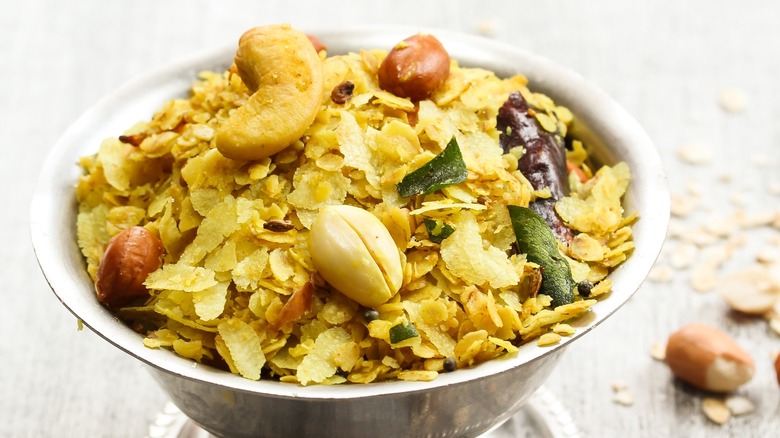Chivda: The Diwali Snack That Packs A Spectrum Of Flavor
The Indian festival of Diwali, celebrated for five days every October, includes many traditions such as cleaning and illuminating homes to welcome the goddess Lakshmi, creating intricate artwork known as rangoli, fireworks displays, and especially feasts. Families prepare a wide range of savory dishes, sweets, and desserts during Diwali to share together and to exchange as gifts.
One treat that's a favorite to make for Diwali is the crunchy and flavorful snack mix chivda. The exact ingredients in chivda vary from one recipe to the next, but one key ingredient is poha: crisp flattened flakes of rice. The poha is fried along with other ingredients like nuts, coconut flakes, raisins, or other dried fruits, chilies, and spices. Cooking instructor Yamini Joshi writes in a Food & Wine piece that although chivda is easy to prepare, it's crucial that each ingredient be cooked separately and with a watchful eye. This ensures that all components are fried to perfection before they're combined into one tantalizing treat that blends salty, sweet, savory, and spicy flavors in every bite.
Chivda recipes are always full of flavor and texture
According to The Spruce Eats, chivda is just one in a large group of foods in Indian cuisine known as namkeen, which are salty, savory snacks. However, because chivda traditionally includes dried fruit, it has a touch of sweetness and chewy textures as well as crunch. Chivda is also packed with potent flavors that make it much more complex than just any old salty snack.
A chivda recipe Yamini Joshi shared with Food & Wine has 20 ingredients, including dried coconut, ground pomegranate seeds, cashews, fennel seeds, curry leaves, fiery chili peppers, and roasted chickpeas. Flavors of Mumbai makes chivda with green grape raisins, sliced coconut, ginger, and turmeric. Other recipes might swap out the rice flakes for murmura, or puffed rice, which gives the snack mix a different look but still plenty of crispy texture.
Chivda is traditionally made by frying the individual components, but there are some recipes prepared partially in the oven to use less oil. In this recipe from Archana's Kitchen, the poha is toasted in the oven until the flakes are "very lightly browned." Other ingredients like raisins, chilies, and spices are still fried in oil to bring out their flavors and then tossed with the baked poha.
If you miss the chance to make a batch of flavorful chivda for Diwali, the good news is that this tempting, sweet-spicy-salty blend is also a popular, year-round snack for afternoon tea, parties, and potlucks.

